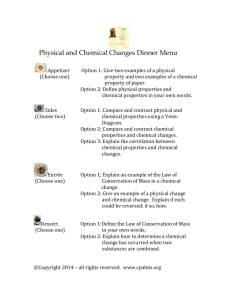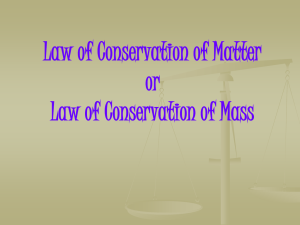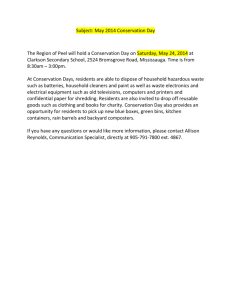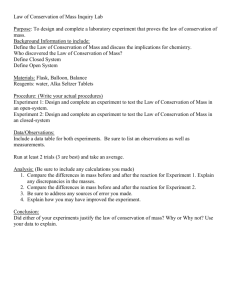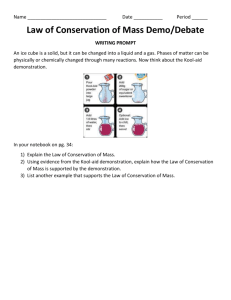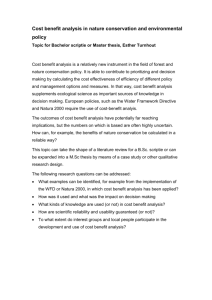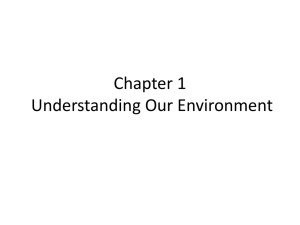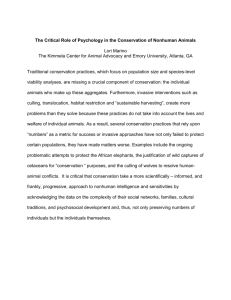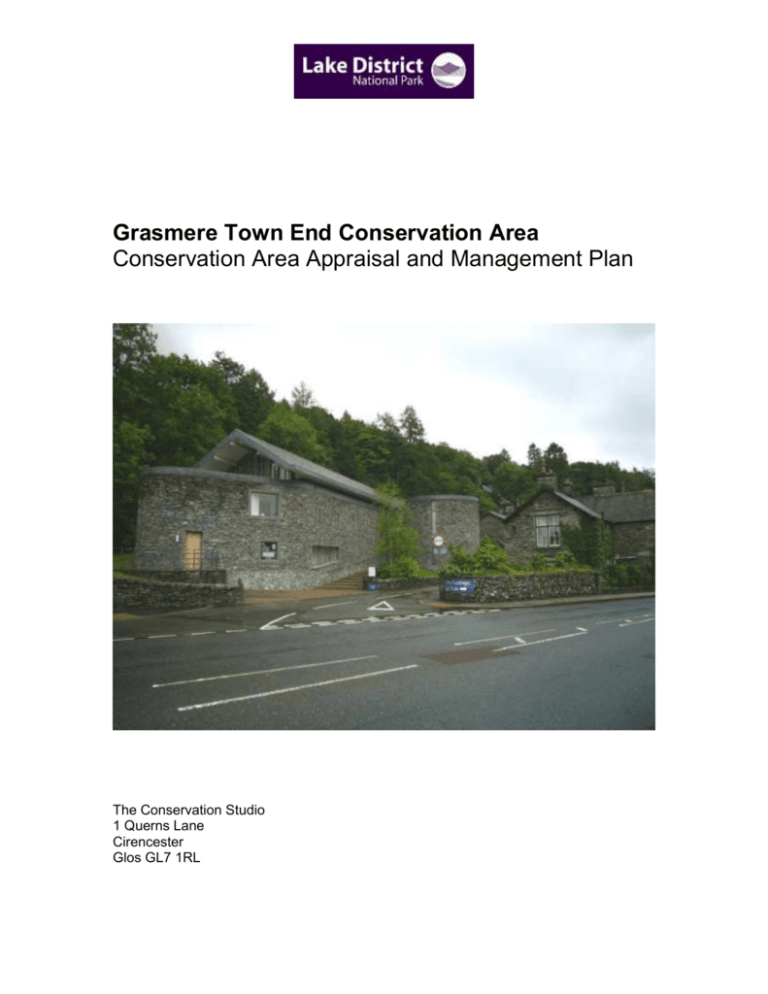
Grasmere Town End Conservation Area
Conservation Area Appraisal and Management Plan
The Conservation Studio
1 Querns Lane
Cirencester
Glos GL7 1RL
Lake District National Park Authority: Grasmere Town End Conservation Area Appraisal & Management Plan
The Ordnance Survey Mapping included in this document is provided by the LDNPA under
licence from the Ordnance Survey in order to make available townscape appraisal information.
Persons viewing the mapping should contact Ordnance Survey copyright for advice where they
wish to licence Ordnance Survey mapping for their own use.
© Crown Copyright All Rights Reserved LDNPA 100021698 2008
The Conservation Studio – 2008
1
Lake District National Park Authority: Grasmere Town End Conservation Area Appraisal & Management Plan
GRASMERE TOWN END CONSERVATION AREA APPRAISAL AND MANAGEMENT
PLAN
Part 1 CONSERVATION AREA CHARACTER APPRAISAL
Summary of special interest
1
Introduction
2
Location and setting
Location
Boundary
Topography and landscape setting
Geology
Archaeology
3
The historical development of the village
4
Surviving historical features within the conservation area
Summary of surviving historical features
5
The character and appearance of the conservation area
Street pattern and building plots
Townscape analysis
Summary of townscape features
Focal points, views and vistas
Current activities and uses
Open spaces, landscape and trees
Boundaries
Public realm
6
The buildings of the conservation area
Architectural styles, materials and detailing
Listed buildings
Significant unlisted buildings
7
Negative features and issues
Part 2 CONSERVATION AREA MANAGEMENT PLAN
Part 3 BIBLIOGRAPHY
The Conservation Studio – 2008
2
Lake District National Park Authority: Grasmere Town End Conservation Area Appraisal & Management Plan
Summary of special interest
The special interest that justifies the designation of Grasmere Town End Conservation
Area can be summarised as follows:
International significance as a centre for Wordsworth heritage, focused
around Dove Cottage, the home of William and Dorothy Wordsworth from
1799 to 1808, and the Wordsworth Museum;
Location on a former packhorse track, now a tree-lined lane, up to White
Moss Common;
Several good examples of architecture influenced by the Lakeland vernacular
style and good quality Victorian architecture;
Award-winning example of contemporary architecture using traditional
materials in the form of the Jerwood Centre, opened in 2005 to house the
collections of the Wordsworth Trust;
Tightly clustered hamlet with houses tucked into the steep hill slope that rises
to the east of the hamlet.
Strong building lines and front elevations that open directly onto the street,
giving strong definition to the streets and lanes, a characteristic that is
reinforced by the strong lines of the Jerwood Centre;
Numerous stone boundary walls within the Conservation Area.
Setting softened by the presence of several large and mature trees in the
centre of the hamlet and by a backdrop of green trees rising above the
hamlet to the east;
Important roofscapes of local slate stone when viewed from the upper heights
of the village, especially down on to the Waterside Hotel;
The palette of building materials reflecting the underlying geology of dark
grey and purple slate stone, with contrasting blue grey detailing for quoins,
window and door surrounds, drip moulds and chimneys;
Significant views entering the hamlet from the south to Grasmere Lake and
Helm Crag; and from the north over Grasmere lake and to the west over the
lake to Silver How;
A large purpose built hotel on the lake shore as testimony to the 19th-century
tourist industry that Wordsworth did so much to inspire.
The Conservation Studio – 2008
3
Lake District National Park Authority: Grasmere Town End Conservation Area Appraisal & Management Plan
1
Introduction
The Grasmere Town End Conservation Area is a compact settlement located on and to
the east of the A591 trunk road, one of the Lake District’s principle north-south transport
routes, built as a turnpike road in from 1831-3 when it superseded the packhorse track
known as Wishing Gate Lane that forms the eastern boundary of Town End as it passes
from nearby Grasmere via Grasmere Town End to Rydal and beyond. The hamlet lies
principally in the elongated triangle of land that lies between this packhorse track (now a
rising tree-lined tarmac-covered lane) and the busy main road. There are further
buildings on the western side of the A591, between the road and Grasmere lake. The
hamlet only as three listed buildings, but the remaining buildings all contribute to the
historical and architectural character of conservation area by virtue of their group value,
their homogeneity of materials and design and their coherence as a hamlet of terraced
and detached cottages with strong building lines.
Grasmere Town End Conservation Area was designated on 11September 1984 by the
Lake District National Park Authority. Conservation areas are designated under the
provisions of Section 69 of the Planning (Listed Buildings and Conservation Areas) Act
1990. A conservation area is defined as ‘an area of special architectural or historic
interest the character or appearance of which it is desirable to preserve or enhance’.
Section 71 of the same Act requires local planning authorities to formulate and publish
proposals for the preservation and enhancement of these conservation areas. Section
72 also specifies that, in making a decision on an application for development within a
conservation area, special attention must be paid to the desirability of preserving or
enhancing the character or appearance of that area.
In response to these statutory requirements, this document defines and records the
special architectural and historic interest of the conservation area and identifies
opportunities for enhancement. These features are noted, described and marked on the
Townscape Appraisal Map along with written commentary on how they contribute to the
special interest of the conservation area. While the descriptions go into some detail, a
reader should not assume that the omission of any building, feature or open space from
this Appraisal means that it is not of interest.
This document conforms with English Heritage guidance as set out in ‘Guidance on
conservation area appraisals’ (August 2005) and ‘Guidance on the management of
conservation areas’ (August 2005). Additional government guidance regarding the
management of historic buildings and conservation areas is set out within ‘Planning
Policy Guidance 15: Planning and the Historic Environment’ (PPG15).
This document seeks to:
Define the special interest of the conservation area and identify the issues which
threaten the special qualities of the conservation area (in the form of the ‘Appraisal’);
Provide guidelines to prevent harm and achieve enhancement (in the form of the
‘Management Plan’).
The Conservation Studio – 2008
4
Lake District National Park Authority: Grasmere Town End Conservation Area Appraisal & Management Plan
This document therefore provides a firm basis on which applications for development
within the Grasmere Town End Conservation Area can be assessed. It should be read
in conjunction with the wider policy framework which applies to the area. These
documents include:
(i) The Lake District National Park Local Plan (adopted 1998): Chapter 3 addresses the
conservation of the built environment;
(ii) The Cumbria and Lake District Joint Structure Plan 2001–2016 (adopted 2006):
Chapter 6 provides strategic guidance for the environment for the period to 2016. Policy
E38 covers the historic environment.
(iii) The Regional Spatial Strategy 2008: Policies EM1, EM2, DP1, DP4 and DP7
The Conservation Studio – 2008
5
Lake District National Park Authority: Grasmere Town End Conservation Area Appraisal & Management Plan
2
Location and setting
Location
Grasmere Town End, which forms a hamlet associated with the town of Grasmere, is
located at the centre of the Lake District National Park. This part of the Lake District lies
within the county of Cumbria. The town of Grasmere sits on the north-eastern side of
Grasmere lake, with extensive views across the lake. The hamlet is located on the
Kendal to Keswick road, the A591, approximately 0.5km to the south east of Grasmere,
approximately 4km north west of Rydal and approximately 7km north west of Ambleside.
The village lies within Grasmere Parish, served by St Oswald’s Church in Grasmere.
Boundary
The conservation area is small and the boundary is tightly drawn around the core of the
historic settlement. It includes development tightly clustered around a triangle of land
sandwiched between the A591 and the rural lane (a former packhorse track) that runs up
to White Moss Common. The southern boundary is partly defined by the edge of the
lake, and the remainder of the boundary predominantly follows the rear plot lines of
buildings within the conservation area.
Fig. 1: Cobbles laid in traditional Lakeland style line the edge of the rural
lane (a former packhorse track) that runs up to White Moss
Common
The Conservation Studio – 2008
6
Lake District National Park Authority: Grasmere Town End Conservation Area Appraisal & Management Plan
The Conservation Studio – 2008
7
Lake District National Park Authority: Grasmere Town End Conservation Area Appraisal & Management Plan
Topography and landscape setting
Grasmere Town End lies towards the southern end of the Grasmere Valley, a broad, flat
valley located at a height of c 90m above sea level surrounded by upland fells that rise
to 400m or more on all sides. These high fells – including Heron Pike, Great Rigg, Helm
Crag, Silver How and Loughrigg Fell – provide a dramatic backdrop to many of the views
through and out from the conservation area. The fells also provide a sense of enclosure
to the valley, which is formed from the junction of two glaciers, and is the last area of
relatively flat land in the southern part of the Lake District.
To the east of the hamlet, the land rises very steeply and the wooded slopes provide an
attractive backdrop to Grasmere Town End, with houses aligned along the packhorse
track tucked in under the slope. Below this line of larger detached properties is the flat
densely built up core of the hamlet, consisting of older houses clustered around Dove
Cottage and newer (post-turnpike road) terraces fronting on to the main road.
On the opposite side of the road, the Waterside hotel is the dominant structure,
stretching, with its numerous extensions, for almost half the length of the conservation
area. The hotel gardens reach to the edge of Grasmere lake, which forms the western
side of the Grasmere Town End Conservation Area. The lake is fed principally by the
River Rothay, though numerous small springs and becks contribute to the lake, some of
which flow down the steep hill that forms the eastern boundary of the village, where the
water is captured in troughs and tanks along the eastern edge of the packhorse track,
before flowing in culverts through the conservation area to the lake.
The lake margins are wild and reed-fringed to the north and south of the village, but
landscaped as waterside gardens with weeping and ornamental trees within the
boundary of the Waterside Hotel. Views extend from the upper part of the hamlet, and
from the main road and hotel gardens, across the lake to a number of large detached
Victorian villas set in luxuriant gardens on the opposite shore.
Town End is closely associated with the larger town of Grasmere, which lies only 0.5km
to the north-west; there are clear views of Grasmere from parts of the Town End
Conservation Area which provides a strong visual connection between the two
settlements. These two settlements are separated from each other by sheep pasture
bounded by slate fences and traditional stone walls. There are significant views out from
the conservation area northwards over Grasmere to the high flat peaks of Helm Crag, to
the north.
The Conservation Studio – 2008
8
Lake District National Park Authority: Grasmere Town End Conservation Area Appraisal & Management Plan
Fig. 2: The Jerwood Centre (2005) is an award-winning building using traditional
stone and slate in a strikingly contemporary design.
Geology
The underlying geology of the area around Grasmere Town End is igneous. However
nearby rocks of metamorphic origin providing the main materials from which the houses
and boundary walls are built: For walls and buildings, much use is made of slate stone,
which varies greatly in colour and texture, but is valued as a building stone because it is
easy to split along natural cleavage lines that result from the fact that the minerals
making up the stone were laid down and compressed in parallel planes. Roofs are
invariably local green slate, albeit that it is not slate at all but rather metamorphosised
volcanic ash.
Also used, especially for field walls, are cobblestones, of the same geological origin, but
rounded into boulders by glacial and river erosion. Thin slate slabs set on end are also
used locally as a traditional form of boundary and though there are no examples within
the conservation area, there is a good example just outside the conservation area,
running along the edge of the stream that passes beneath Stock Bridge on the road into
Grasmere.
Archaeology
There are no scheduled monuments within the conservation area and no known
archaeological sites.
The Conservation Studio – 2008
9
Lake District National Park Authority: Grasmere Town End Conservation Area Appraisal & Management Plan
Fig. 3: ‘Where once the Dove and Olive-bough offered a greeting of good ale to all who
entered Grasmere Vale’ (‘The Waggoner’, 1806, by William Wordsworth)
Dove Cottage, Wordsworth’s home from 1799 to 1808, is possibly the oldest surviving
house in Town End. Recorded in a list of public houses in Westmorland in 1617 as the
‘Dove and Olive Branch’, it was converted to a dwelling in 1793.
3
The historical development of the village
It is thought that the name ‘Grasmere’ is derived from Old English where ‘mere’ means
lake and ‘gras’ derives from the same root as grass and grazing; hence ‘lake with
grassland’, which accurately describes the appearance of the northern shores of the
lake. ‘Town’ is a late corruption of ‘ton’, ‘tun’ or ‘thun’, meaning an outlying or dependent
farm, settlement or village, which again accurately describes Grasmere Town End’s
close historical links to the larger nearby settlement of Grasmere.
The hamlet lies within the large parish of Grasmere, which historically consisted of the
three townships (now parishes in their own right) of Grasmere, Langdale and Loughrigg.
Grasmere contains the parish church, St Oswald’s, which probably has Saxon origins,
though the visible fabric of the present structure is mainly 14th century.
In the Lake District during the medieval period, parish churches were separated by
considerable distances and each served a large area. A network of ‘corpse roads’
extended across the wider parish, so called because they were the routes by which the
deceased were carried to Grasmere in their coffins for burial in the churchyard. One
such road crosses the hillside to the east of Grasmere Town End and continues through
the village along the lane that is itself part of the packhorse route linking Grasmere to
Ambleside. At the point where the corpse road and the packhorse track meet (just
outside the conservation area) there is a large ‘coffin stone’ or ’resting stone’ on which
the coffin was set while the bearers rested. A further ‘corpse road’ connected St
The Conservation Studio – 2008
10
Lake District National Park Authority: Grasmere Town End Conservation Area Appraisal & Management Plan
Oswald’s to Chapel Stile and Great Langdale, over Hunting Stile and Red Bank until the
early 19th century.
Town End developed as a farming hamlet along the packhorse route and is one of a
number of such hamlets making up the scattered settlement of Grasmere. Further
outlying hamlets can be found at Lancrigg, Above Beck and Town Head. Town End and
Town Head mark the southern and northern extent of the medieval township. A
characteristic of all of these farmstead clusters is their location on higher dry ground
above the seasonally wet valley floor. Town End, for example, lies on a terrace set some
10m above the valley bottom on rising ground, with numerous springs, troughs and
ponds located along the back lane to White Moss Common.
Fig. 4: The former pack horse track as it descends
into the conservation area from White Moss Common
4
Surviving historical features within the conservation area
Summary of surviving historical features:
The pack horse route (now a metalled lane) running down from White Moss
Common and through the hamlet to Grasmere, along which most of the
properties in the hamlet are located;
Secondary development along the late-18th century turnpike road (now the A591)
Three listed properties: Dove Cottage, famous as Wordsworth’s home, the Old
Sykeside; and the Boathouse
Farmhouses, cottages, former smithy, byres, barns and sties typical of a
traditional agricultural settlement;
A large purpose built hotel and associated boathouse from the Victorian era of
mass railway-borne tourism.
The Conservation Studio – 2008
11
Lake District National Park Authority: Grasmere Town End Conservation Area Appraisal & Management Plan
Fig. 5: The Ordnance Survey map of 1915 compared with today’s map shows how little has since
changed in the Grasmere Town End Conservation Area
5
The character and appearance of the conservation area
Street pattern and building plots
Grasmere Town End has a relatively simple street pattern. Though it is now a quiet
secondary lane, the former pack horse route linking Ambleside and Grasmere descends
from White Moss Common to the south east of the conservation area and passes
through the conservation area heading north west for Grasmere along Stock Lane (the
B5287).
Most of the buildings in the conservation area are built to the western side of this lane,
tucked in to the hillside in such a way that it is mainly the roof slopes that you see as you
descend into Grasmere Town End. At the lower end of the lane, where the gradient is
less steep, there are dwellings on both sides of the lane. Some, like Dove Cottage, have
small gardens, but most are packed in tightly on to the limited amount of flat ground.
Here, most of the building plots are very small, with properties fronting directly on to the
lane and only very small rear yards, many of which have single storey extensions and
outbuildings that were once privies, stables, byres, hen coops or pig sties.
Cutting across the lane, running north–south, is the A591 (the late 18th-century turnpike
road), which is the focus for 19th- and some early 20th-century development. Here the
The Conservation Studio – 2008
12
Lake District National Park Authority: Grasmere Town End Conservation Area Appraisal & Management Plan
buildings are much larger in scale, though those at the apex of the Town End triangle
(the northern end) again lack gardens commensurate with their scale and size because
of the constricted nature of the site.
Fig.7: The dense urban nature of the centre of Town End results from the
small plot sizes and the lack of gardens
Townscape analysis
Town End is a densely developed and tightly packed village, constrained by its
topography, squeezed between the steep hillside that forms its eastern boundary and
the eastern shores of Grasmere Lake. In plan, Grasmere Town End forms an elongated
triangle with its broadest end at the southern upper end of the hamlet, and its apex at the
southern end. Here the modern Jerwood Centre (2005) provides appropriate closure to
the edge of the hamlet, its high curving stone walls echoing the form of a medieval
gatehouse and its bastion-like tower lending to Grasmere Town End something of the
appearance of a medieval defended citadel.
Towards this narrow northern end of the triangle, few properties have gardens of any
size, and the feeling of dense development is reinforced by the narrowness of the lane,
its lack of pavements, the strong linearity of the streetscape created by front elevations
that are built on to the road edge. To the west of this narrow lane, another lane cuts
through from the Old Sykeside and Dove Cottage, passing high walls that surround back
yards with slate-roofed extensions, outhouses, external toilets and former animal byres,
to the car park and restaurant serving Dove Cottage. This flat open space, softened by
trees, is lined on its northern edge by late Victorian shops with accommodation above:
original shop windows survive.
Further out of the hamlet centre, the denser development gives way to larger buildings
set in more generous grounds – notably the large guest house called Howe Foot and the
The Conservation Studio – 2008
13
Lake District National Park Authority: Grasmere Town End Conservation Area Appraisal & Management Plan
former Prince of Wales (now the Waterside) Hotel. How Foot, dating from 1843, is an
example of the large Victorian villas that were built in this part of the Lakes from the mid
19th Century as the District became increasing fashionable, particularly after the arrival
of the railway: there are many more examples outside the conservation area hidden
among the sheltered slopes to the west of Town End, sited to make the most of views
over Grasmere lake.
Fig. 8: The density of the development is relieved by some large
mature beech trees and by glimpses of green fields and fell sides
Fig. 9: Larger villas set in spacious grounds were built around the
margins of the hamlet once the Windermere railway made the
southern Lakes accessible.
The Conservation Studio – 2008
14
Lake District National Park Authority: Grasmere Town End Conservation Area Appraisal & Management Plan
Fig. 6: Grasmere Town End Townscape Appraisal map
The Conservation Studio – 2008
15
Lake District National Park Authority: Grasmere Town End Conservation Area Appraisal & Management Plan
Focal points, views and vistas
These are shown on the Townscape Appraisal Map, as follows:
A – At the southern end of the village to Helm Crag and Great Rigg, mountain
peaks closing the northern end of the Grasmere valley;
B – Westwards across Grasmere lake to the wooded shores of the opposite
bank;
C and D – Short Views to Howe Foot;
E Distant views to lake shores;
F, G and H – Views across the meadows to Grasmere and the hills to the west
and north;
I – Views into Grasmere Town End from the north, taking in the bastion- and
keep-like tower and northern end of the Jerwood Centre;
J – Views through the conservation area along the principal roads;
K –View out of the conservation area along a steep and increasingly rural treeshaded lane;
L – Short views within the conservation area of slate roofs, walls, chimneys and
trees, giving a sense of the dense development at the heart of the hamlet.
M - View from Dove Cottage to Helm Crag
In addition there are many significant views from and into the conservation area given
the nature of the surrounding topography and these are too numerous to mention within
the appraisal. These include important long views of Townend from the wider area
including from across Grasmere Lake, from Red Bank Road and from Helm Crag.
The Conservation Studio – 2008
16
Lake District National Park Authority: Grasmere Town End Conservation Area Appraisal & Management Plan
Fig. 10: Some of the significant views in to, within, and out from the conservation area.
Scenic views west out from the conservation
area extend across Grasmere lake, taking in
large villas and gardens on the opposite shore.
The entrance to the village from the south
takes in the rural setting of lake shore, fields
and distant fells.
View of The Waterside Hotel from the east,
looking toward the lake and the fells.
The view out of the conservation area to the
north takes in the distinctive peak of Helm
Crag with Steel Fell behind.
Views through the village are often tightly
framed by buildings; here the view extends past
the former Wordsworth Museum to Dove
Cottage.
The entrance to the conservation area from
the direction of White Moss Common is
framed by high stone walls and Howe Foot.
The Conservation Studio – 2008
17
Lake District National Park Authority: Grasmere Town End Conservation Area Appraisal & Management Plan
Current activities and uses
The direct associations of Grasmere Town End with William Wordsworth, and other
Lakeland poets, has made the village a popular tourist destination. Upwards of 70,000
visitors a year visit Wordsworth’s home, Dove Cottage, which first opened to the public in
1891, and to visit the associated museum and art gallery. Dove Cottage is thus the main
busy focus of activity in the hamlet, but so too is the shop and ticket office to the north of
Dove Cottage and, to a lesser degree, the Wordsworth Museum and Jerwood Centre on
a terrace to the north east.
Many properties in the village are owned and used by The Wordsworth Trust and used
as offices, accommodation and storage space, and several businesses located in the
hamlet provide accommodation and catering to visors, including the tea room and
restaurant located adjacent to the museum car park, and The Waterside Hotel. The
Wordsworth Trust also uses the Waterside Hotel as a venue for talks, poetry readings
and other events that take place throughout the year. Further accommodation is
provided in and just outside the conservation area in self-catering holiday homes.
All of these activities make Grasmere Town End a busy place, particularly during the
high season, when the large car park in the village is full. When the tourist attractions are
closed, the village has a much quieter, tranquil character.
Open spaces, landscape and trees
The heart of the conservation area comprises a dense cluster of buildings, and there is
little significant open space here, other than the Dove Cottage car park. For this reason,
the few trees that there are within the conservation area (including two large mature
beech trees) make a major impact, as do the small front and rear gardens of domestic
buildings, especially along the A591.
Large car parks dominate parts of the conservation area, including the staff car park to
Jerwood Centre, which just outside the conservation area boundary but impacts on
views and the setting of the conservation area. Also the car park set aside for visitors to
Dove Cottage and the Wordsworth Museum is prominent, although the impact of this is
mitigated by some large deciduous trees growing on the margins of the car park and in
the gardens of Howe Foot. Important informal open space and greenery exists around
La Columbina restaurant and the Wordsworth car park.
Less attractive are the large car parks to the north and south of the Waterside Hotel,
which lack the landscaping and planting that would mitigate the large expanses of
broken and potholed tarmac that dominate views into the conservation area along the
A591. To the north between the hotel and Stock Lane are a poorly managed tree
groups, including alien species such as Leylandii, which obscure important views to
Silver Howe and the Lake.
The wider landscape setting serves to contrast with the dense development of the small
village, and overall providing a sense of spaciousness and scenic grandeur, with clear
views across the lake, across fields and to the distant peaks of the Helm Crag and Silver
How. The Waterside Hotel has a large lakeside garden, forming a key part of the setting
of the large 19th century building.
The Conservation Studio – 2008
18
Lake District National Park Authority: Grasmere Town End Conservation Area Appraisal & Management Plan
The hillside which forms the eastern boundary to the conservation area is thickly
wooded, and this provides an important and attractive green backdrop to the village,
relieving the grey of the local stone.
Boundaries
Walls constructed from roughly hewn blocks of slate-stone are the prevalent boundary
treatment throughout the conservation area, used alike to enclose domestic plots and to
border fields and rural lanes. These walls are generally capped with stones laid vertically
on edge, creating a pleasingly irregular profile.
Gate posts are often formed from large slabs of stone sunk vertically into the ground.
The southern boundary to the Waterside Hotel is distinguished by 19th-century stone
piers supporting original cast iron lamps
Fig. 11: The distinctive boundary walls of the conservation area are formed from
randomly laid courses of slate stone with cappingstones set on edge. Here too the inset
plaque marks the boundary of the parishes of Grasmere and Grasmere Town End.
Public realm: floorscape, street lighting and street furniture
The floorscape of the conservation area is prevalently urban and modern in character,
with roads, pavements and lanes of tarmac. The A591, a major arterial road, runs
through the centre of the conservation area, . The narrow pavements to either side of the
road are bound by concrete and stone kerbs. The back lanes, while of tarmac, have a
less urban character, and as the back lane climbs south-east up toward White Moss
Common, grass verges begin to border the thoroughfare. Large expanses of historic and
newly-laid cobbled surfaces provide textural interest and definition to parts of the
The Conservation Studio – 2008
19
Lake District National Park Authority: Grasmere Town End Conservation Area Appraisal & Management Plan
floorscape. For example the roadway running between the Jerwood Centre and Dove
Cottage is bordered to either side by cobbled gutters and some of the lanes and yards
around Sykeside are also cobbled.
There is just one street light within the public realm, although the private car park to the
Waterside Hotel is lit by low-level lamp columns. Other street furniture is minimal, thus
helping to retain the character of this small settlement within a significant rural setting.
There is a large amount of signage throughout the conservation area. This is a
combination of traffic signs, large advertising boards for hotels and attractions, and
directional fingerposts for pedestrians. Some of this signage impinges on the
appearance and character of this small village especially at the northern entrance to the
conservation area, and on the southern entrance where the historic lakeside boathouse
supports a large hotel sign.
Fig. 12 Cobbled gutters in the lane running
between the Jerwood Centre and Dove Cottage
6 The buildings of the conservation area
Architectural styles, materials and detailing
The buildings within the Grasmere Town End Conservation Area date from the 17th
century onwards. The oldest houses are at the centre of the village and include the
grade-I listed Dove Cottage, which is late 17th century with an 18th-century range
attached, probably erected when the building became an inn, the Dove and Olive. Dove
The Conservation Studio – 2008
20
Lake District National Park Authority: Grasmere Town End Conservation Area Appraisal & Management Plan
Cottage is a modest two-storey building, constructed from rubble stone concealed
beneath a render finish beneath a green slate roof.
Opposite is the other listed building in the hamlet, the grade-II listed Old Sykeside (listed
as the Wordsworth Museum which is now housed in another building). The cottage is
constructed from exposed slate stone laid in an irregular pattern utilizing variously sized
pieces of stone. This building has the columnar chimneys typical of Lakeland vernacular
architecture, albeit later additions to the building. There is a noticeable contrast in scale
between earlier more humble cottage architecture and the grander and often substantial
Victorian houses and villa buildings. The Arts and Crafts features of the old library
building are also worthy of note
Most of the other buildings along Town End’s back lane, including the modern Jerwood
Centre, contribute to the harmony of the whole in having slate stone walls and roof tiles.
Locally quarried Helm red/purple slate stone for walling and greenslate roofs
predominate. Within that overall harmony, there is much variation in the detailing,
including gable finials, barge boards, deeply overhanging eaves, swept slate valleys,
varied chimney stack design, random and coursed slate walling, rough harling render
using local river sand, triangular headed windows, windows with slate stone drip moulds,
casement windows with a single opening pane, leaded lights set in iron frames, recessed
and projecting porches, canted bay windows and heavily nailed front doors. There is
also bee bole at Old Sykeside. For the most part, extensions are appropriate in scale,
respecting the hierarchy of main house to subsidiary structure, with single pitched slate
roofs, sometimes of stone and sometimes tile hung.
The hamlet’s 19th-century buildings tend to be built of smaller slabs of stone, laid with an
attempt at horizontal coursing. Those lining the linking lane have small shop windows
(the 3ºW Gallery, for example) divided into three or four panes divided by slender
moulded glazing bars with semi-circular window heads; these, along with the canted
corner entrance of the 3ºW, are typical of the small Victorian shops of the area (there are
further examples in Grasmere itself) and represent the output of local joiners and
glaziers. Typically theses shop houses have tall sash windows with triple panes, by
contrast with the later Victorian terraces lining the main road, which are three stories tall
with large dormer windows and double-paned sashes.
There are some exceptionally large buildings within the conservation area. Howe Foot,
for example, is a Victorian detached villa set in extensive gardens of the kind that grew
up in the area after the construction of the railways to Windermere in 1847, catering to
affluent buyers attracted by the scenic views. The Waterside Inn is an imposing purposebuilt hotel of the same era, dating from 1855, though much extended in the later half of
the 20th century.
Grasmere Town End has some distinctive one-off buildings that add to the richness and
variety of the conservation area’s built environment. One of these is the ornate boat
house at the southern entrance to the village, with its date stone inscribed ‘W D 1843’. It
has deeply overhanging slate stone roof, its heavily nailed and ornate strap hinges and
hood mould and its columnar chimney. Another is the tea house and restaurant to Dove
Cottage, with columnar façade built of rendered stone under slate roof with bracketed
eaves in Lakeland vernacular style. Most striking of all is the modern Jerwood Centre,
constructed in traditional materials but with a more modern scale and form.
The Conservation Studio – 2008
21
Lake District National Park Authority: Grasmere Town End Conservation Area Appraisal & Management Plan
Fig. 13: The boathouse at the entrance to the village perfectly
encapsulates the features of Lakeland vernacular with its
overhanging eaves, columnar chimney and slate stone walls and roof.
Listed buildings
A listed building is one that is included on the Government’s Statutory List of Buildings of
Special Architectural or Historic Interest. These buildings are protected by law and
consent is required from the Lake District National Park Authority before any works of
alteration, extension or demolition can be carried out. Listed buildings are marked on the
Townscape Appraisal map. These are:
Dove Cottage – Grade I;
Wordsworth Museum – Grade II.
The Boat House – Grade II
Fig. 14 Old Sykeside was formerly a barn and was converted in the
1930s when new windows, boiler house and chimneys were added.
The Conservation Studio – 2008
22
Lake District National Park Authority: Grasmere Town End Conservation Area Appraisal & Management Plan
Significant unlisted buildings
A number of unlisted buildings have been identified on the Townscape Appraisal map as
being ‘Buildings of Special Character’. These buildings vary, but typically they are good
examples of relatively unaltered historic buildings where their style, detailing and building
materials provides the streetscape with interest and variety. Most importantly, they make
a positive contribution to the special interest of the conservation area. Where a building
has been heavily altered, and restoration would be impractical, they are excluded.
Fig. 15: Some features of the buildings in Grasmere Town End.
1 Town End nestles against the slope of the hillside, with its typical
Lakeland quoins and drip moulds and its heavily studded door.
Many different window styles are found in Town End: here an opening
central casement between two fixed panes.
The Conservation Studio – 2008
23
Lake District National Park Authority: Grasmere Town End Conservation Area Appraisal & Management Plan
This Victorian shop window is in a style typical of Grasmere and Town End.
The circular form of the Rotunda tower of the Jerwood Centre
Cobbled yard and sties reflect the agricultural origins of Town End.
The Conservation Studio – 2008
24
Lake District National Park Authority: Grasmere Town End Conservation Area Appraisal & Management Plan
7
Negative features and issues
Inappropriate alterations to buildings
Some of the buildings within the conservation area are suffering from an incremental
loss of architectural detail. The use of inappropriate modern materials, such as the
replacement of original timber windows with uPVC and the introduction of timber tophung ‘mock’ sash windows is adversely affecting both the listed and the unlisted
buildings in the conservation area. There have also been alterations to door and window
openings. There are also a number of instances where porches have been erected on
the entrance fronts of historic buildings, which in some cases has had a negative impact
on the appearance and character of the building.
The use of stains and varnishes on timber doors and windows
A number of the buildings within the conservation area display timber door and window
joinery which has been stained and/or varnished in a bright orange or dark brown colour.
This non-traditional treatment severely erodes the appearance and character of these
features, to the detriment of the special interest of the conservation area.
Inappropriate additions to buildings
On the whole, the conservation area is remarkably free of overhead wires and accretions
such as satellite dishes and extractor vents, though there are some examples of poorly
sited burglar alarms and roof lights in prominent roof slopes (for example, in the listed
Old Sykeside). Such additions are highly visible, particularly given the topography of the
area which enables clear views of the roofscape and detract from the character of the
historic environment. Light pollution from external illumination is also evident in the
village.
Siting of downpipes and soil stacks
A number of buildings in the conservation area have had the clean lines of their principal
frontages compromised by insensitive siting of soil stacks, drainage pipes and down
pipe, which are best sited vertically at the side or rear of buildings, or at the corners,
rather than cutting across frontages at an angle of placed arbitrarily in relation to the
design of the building. Loose and trailing telegraph wires (for example at No 2 Town
End) are a minor form of the same problem.
Uncoordinated public realm
Several parts of the conservation area are marred by signage: they include the side of
the boathouse at the southern entrance to the village, the roundabout junction at the
northern entrance to the village, the railings surrounding the Old Sykeside, the entrances
to the Dove Cottage car park and entrances to the Waterside hotel. This signage not
only undermines the historic character and rural appearance of the conservation areas
lanes and open green spaces, it also confuses, rather than clarifies, because there are
so many signs competing for attention. Cobbles near to Dove Cottage are in need of
repair.
Building maintenance and repair
Buildings in the conservation area are generally in a good state of repair.
Alteration of traditional stone boundary walls and gates
The stone boundary walls are an attractive feature of the conservation area and are
generally maintained throughout the village. At the northern end of the conservation
The Conservation Studio – 2008
25
Lake District National Park Authority: Grasmere Town End Conservation Area Appraisal & Management Plan
area, the field gate beyond Rose Cottage is of modern galvanized steel, instead of
traditional timber; the adjacent wall has also been pointed using pink mortar rather than
the local grey/white lime mortar.
Traffic management
The A591, which passes through Town End, is one of the Lake District’s busiest roads.
Along the road itself, traffic noise and pollution are a problem, and pedestrians can feel.
Wishing Gate Lane is also commonly used as a rat run for vehicle wishing to avoid the
busy main road, with vehicles often travelling at excessive speed threatened by
speeding traffic. Away from the main road, the noise is diminished, partly because of the
sound-proofing effect of the buildings of Town End. Vehicular parking also detracts from
the setting.
The Conservation Studio – 2008
26
Lake District National Park Authority: Grasmere Town End Conservation Area Appraisal & Management Plan
Fig. 16: Examples of negative features and issues in Grasmere Town End.
Car and coach parks are necessary to the local
economy but could be softened through better
landscaping.
Inappropriate modern materials used in extensions
can erode the character and appearance of the
conservation area.
Areas of car parking and a confusion of signage create
an uninviting scene at the entrance to the village.
These garages are an ugly intrusion into the
historic streetscape.
Examples of prominent signage that compete for
attention and confuse rather than clarify.
The Conservation Studio – 2008
Undistinguished buildings in a universal style that
lacks local resonance and stands out from, rather
than blending in with, surrounding historic
buildings.
27
Lake District National Park Authority: Grasmere Town End Conservation Area Appraisal & Management Plan
This tubular steel gate is harsh industrial intrusion into
a timeless landscape, as is the pink cement based
mortar used to finish what is otherwise a good
Lakeland wall.
Open spaces
Large car parks alongside the Jerwood Centre, to both sides of the Waterside Hotel and
in the centre of the village serving visitors to Dove Cottage, are out of scale with the rest
of the hamlet and could benefit from landscaping with trees and raised flower beds to
break up the expanse of tarmac and soften their intrusive impact of cars and coaches.
Between Field Head Cottage and Rose Cottage, on the north-western edge of the
conservation area, overgrown allotment gardens have been used as a tip for domestic
and garden waste, including old mattresses and carpet.
Design of new development
The Jerwood Centre is an outstanding example of contemporary design that fits
successfully into the historic environment of Town End, but there are also some
examples of poor design, notably in the multiple extensions to the Waterside hotel.
These are built in a universal and utilitarian style that owes nothing to the surrounding
architecture. This 20th-century development, which is especially poor on the northern
side of the Waterside hotel, with its large single storey extension covered in grey render,
does not reflect the traditional details or palette of materials of the historic buildings nor
is it high-quality yet compatible contemporary architecture.
Historic views obscured by trees
Views to the fells are historically important in Townend because of the association with
Wordsworth, who once enjoyed uninterrupted views from Dove Cottage. While later
historic buildings now interrupt many views to the west trees also have been allowed to
grow to the north of the Waterside Hotel without regard to the harmful impact on historic
views.
The Conservation Studio – 2008
28
Lake District National Park Authority: Grasmere Town End Conservation Area Appraisal & Management Plan
PART 2
1
CONSERVATION AREA MANAGEMENT PLAN
INTRODUCTION
1.1
Legislative background
The designation and appraisal of any conservation area is not an end in itself. The
purpose of this document is to present proposals to achieve the preservation and
enhancement of the conservation area’s special character, informed by the appraisal,
and to consult the local community about these proposals. The special qualities of the
area have been identified as part of the appraisal process in the first section of this
document and both will be subject to monitoring and reviews on a regular basis.
This guidance draws upon the themes identified in Section 7 of the conservation area
appraisal ‘Negative features and issues’. The document satisfies the statutory
requirement of section 71(1) of the Planning (Listed Buildings & Conservation Areas) Act
1990 namely:
“It shall be the duty of the local planning authority from time to time to formulate and
publish proposals for the preservation and enhancement of any parts of their area which
are conservation areas.”
Section 69 [2] also states:
“It shall be the duty of the local planning authority from time to time to review the past
exercise of functions… and determine whether any further parts of their area should be
designated as conservation areas”
The document reflects Government guidance set out in Planning Policy Guidance 15:
Planning and the Historic Environment, English Heritage guidance entitled Guidance on
the management of conservation areas (August 2005), best practice guidelines, policies
within the Lake District National Park Local Plan (1998) and any policies which
supersede this in the Cumbria and Lake District Joint Structure Plan 2001–2016 (2006)
and the Regional Spatial Strategy 2008, together with guidance leaflets including
Converting an old building? and Outdoor advertisements and signs.
It is important that the development control process ensures the preservation of special
character and that opportunities are taken to identify and implement enhancements.
However, it is recognised that any such improvements may have to be intitiated and coordinated by us, working with our partners and other funding bodies. The valuable
contribution of local environmental and community groups to positive enhancement
works and the role of the Parish Plan are also essential to enhancement. In particular
the invaluable work of the Wordsworth Trust in securing the preservation, conservation
and interpretation of Townend over more than a century and their commitment to
architectural innovation and high quality design, merits special mention.
1.2
Designation and extension
As part of the appraisal process to identify the special architectural and historic interest
of Grasmere Town End, and to designate the village as a conservation area, the
boundary was tightly drawn to include only the area identified as being of significant
The Conservation Studio – 2008
29
Lake District National Park Authority: Grasmere Town End Conservation Area Appraisal & Management Plan
value; this review confirms that the current boundaries are drawn in such a way as to
include only the area identified as being of significant value.
1.3
Statutory controls
Designation as a conservation area brings a number of specific statutory provisions
aimed at assisting the “preservation and enhancement” of the area. These include
requiring Conservation Area Consent for the demolition of any unlisted building,
restrictions on advertisements, and requiring notice for proposed tree works.
RECOMMENDED ACTION: We will seek to ensure that all development within the
conservation area seeks to preserve or enhance the character or appearance of
the area in accordance with local, county and regional policies and other
guidance.
1.4
Listed Buildings
Listed buildings are protected by law as set out in the Planning (Listed Buildings and
Conservation Areas) Act 1990. The listing covers both the inside and outside of the
building, and any structure or building within its curtilage which was built before 1947.
“Listed Building Consent” is required from the Authority for any work which affects the
special architectural or historic interest of the listed building. There are presently two
listed structures within the conservation area.
Extensions and alterations to listed buildings should conform with polices outlined in
section 1.1 above, and should generally:
Take into account the prevailing forms of development;
Complement the form and character of the original building;
Be subordinate in bulk and scale to the principal building;
Use high quality materials and detailing;
Pay particular attention to roof lines, roof shape, eaves details, verge details and
chimneys.
RECOMMENDED ACTION: We will seek to ensure that all works to a listed building
have special regard to the desirability of preserving the building or its setting or
any features of special architectural or historic interest that it possesses in
accordance with local, county and regional policies and other guidance.
.
1.5
Significant Unlisted Buildings
In addition to the listed buildings, there are many individual and groups of buildings and
associated features that are of considerable local interest and that make a positive
contribution to the character or appearance of the conservation area, and these are
shown as ‘Significant Unlisted Buildings’ on the Townscape Appraisal Map. A high
proportion of the buildings within the conservation area were identified by the townscape
appraisal to be ‘Significant Unlisted Buildings’. There is a presumption that all such
buildings will be retained, in accordance with Policy BE12 of the Lake District National
Park Local Plan (1998). We will encourage all applications for extensions and alterations
to these buildings to be particularly carefully considered
RECOMMENDED ACTION: We will ensure that the qualities of all Significant
Unlisted Buildings (as identified on the Townscape Appraisal map) and the
The Conservation Studio – 2008
30
Lake District National Park Authority: Grasmere Town End Conservation Area Appraisal & Management Plan
contribution they make to the character and appearance of the conservation area
are carefully considered in relation to their proposed development or demolition.
1.6
Protecting the local character and features within the conservation area
There is an opportunity to maintain and improve the character and appearance of the
conservation area simply by ensuring that day to day improvements, alterations and
maintenance of properties, however minor, are carried out sympathetically using good
quality materials and details. The local community has a big part to play in this and, over
time, the benefit to the conservation area can be very significant.
The appraisal identified that the following alterations can, cumulatively, seriously affect
the special character of the area and therefore need to be considered very carefully:
loss of timber windows and doors;
alterations to window/door openings;
the erection of porches;
minor installations and alteration of materials;
loss and alteration of boundary walls.
Following consultation and working with the local community, we could seek to retain
and conserve those traditional features which are important to the area’s character by
introducing an Article 4 Direction, to help manage alterations to single family dwelling
houses, such as putting up porches, changing roofing material or changing distinctive
doors and windows.
RECOMMENDED ACTION: We will seek to consider the need for Article 4
Directions, on a case by case basis, to ensure that the special qualities of
Significant Unlisted Buildings are protected.
1.7 Trees
Within conservation areas, anyone intending lopping or felling a tree greater than 75mm.
diameter at 1.5 metres above the ground must give us six weeks written notice before
starting the work. This provides us with an opportunity of assessing the tree to see if it
makes a positive contribution to the character or appearance of the conservation area, in
which case a Tree Preservation Order may be served. The appraisal identifies a number
of significant trees and groups of trees on verges or within areas of public open space
and within private gardens.
RECOMMENDED ACTION: We will seek to consider the use of Tree Preservation
Orders in appropriate circumstances where a tree has significant amenity value
and is considered to be potentially under threat.
1.8
Setting and views
The setting of the conservation area and views within, into and from the area are very
important to its character and appearance. It is important that development,
enhancement and public realm work takes account of important viewpoints and that
these are preserved or enhanced so that the special character of the conservation area
is retained. In particular historic views currently obscured by poorly managed tree
planting should be addressed where possible. Important views are identified on the
Townscape Appraisal map in the character appraisal.
The Conservation Studio – 2008
31
Lake District National Park Authority: Grasmere Town End Conservation Area Appraisal & Management Plan
RECOMMENDED ACTION: We will seek to ensure that development, enhancement
and public realm work preserve or enhance important views within, into and from
the conservation area, as identified in the appraisal.
1.9
New development, re-development, alterations and extensions
While there are few opportunities for large-scale redevelopment within the conservation
area, some improvement or enlargement of the existing buildings may be possible
subject to sensitive design and good quality materials and details. There may
occasionally be sites where completely new development is acceptable. As the quality of
the general environment within the conservation area is already acknowledged by
designation, the Authority will encourage good quality schemes that respond positively to
their historic setting. This includes the encouragement of high quality contemporary
design and materials. Applications will be determined in relation to the polices outlined
in section 1.1 above and other published guidance.
RECOMMENDED ACTION: We will determine applications with regard to the local,
county and regional policies and other published guidance and seek to encourage
good quality design and materials.
1.10 Boundary treatments
Traditionally, most boundaries in the conservation area are defined by stone walls. There
is a small loss of these walls where routine maintenance and rebuilding of fallen sections
has been neglected.
RECOMMENDED ACTION: We will encourage the maintenance of traditional stone
walls and seek their retention rather than their replacement with new nontraditional boundary treatments.
1.11 The public realm and enhancement
The appraisal has identified significant stretches of historic cobbled floorscape within the
conservation area. The present road layout reflects the historic street pattern and this is
unlikely to be vulnerable to future change, although highway signage and other
structures can serve to detract from the quality of the public realm and character of the
area. Sympathetic measures to calm traffic on Wishing Gate Lane might also be
considered. Parking is an ongoing problem within the conservation area.
RECOMMENDED ACTION: The Authority will work with Cumbria County Council,
through both enhancement work and planning applications, to ensure that any
highway works bring a positive improvement to the conservation area, to ensure
that surviving areas of historic floorscape are retained and to achieve an
appropriate balance in the provision of on street parking which does not harm the
character of appearance of the conservation area.
1.12 Advertisements/signs
The appraisal has identified that there are a number of large advertisement signboards
within the conservation area. The use of such signs needs to be carefully monitored and
controlled, with regard to size, design and materials, to ensure that any negative impact
on the character of this rural settlement is kept to a minimum.
The Conservation Studio – 2008
32
Lake District National Park Authority: Grasmere Town End Conservation Area Appraisal & Management Plan
RECOMMENDED ACTION: The Authority will seek to resist proposals for
advertisement signage of a scale, design and materials that fails to respect the
character of the conservation area.
2
MONITORING AND REVIEW
The following actions are recommended to ensure that this appraisal and management
proposals are accepted and acted upon by the local community:
2.1
Boundary review
RECOMMENDED ACTION: We will seek to continue to review the boundary of the
conservation area in accordance with Best Practice and guidance on the
management of the historic environment.
2.2
Public consultation
The Grasmere Townend Conservation Area and Management Plan has been created by
collaborative working between heritage consultants, The Conservation Studio, the Lake
District National Park Authority and the local community. The appraisal and management
plan has been subject to a 4 week period of public consultation commencing in
December to January 2008-9. This included placing the document on the Authority’s
website and the provision of a public exhibition at Grasmere Village Hall. The document
has subsequently been amended to incorporate relevant suggestions and comments.
2.3
Document review
This document should be reviewed every five years. A review should include the
following:
A survey of the conservation area and boundaries;
An assessment of whether the detailed management plans in this document have
been acted upon, including proposed enhancements;
The production of a short report detailing the findings of the survey and proposed
actions and amendments;
Public consultation on the review findings, any proposed changes and input into the
final review.
The Conservation Studio – 2008
33
Lake District National Park Authority: Grasmere Town End Conservation Area Appraisal & Management Plan
3
BIBLIOGRAPHY
Brunskill, R W
Traditional Buildings in Cumbria
2002
Denyer, S
Traditional Buildings and Life in the
Lake District
1991
Landscape Character Assessment
2007/8
The Lake District National Park Local Plan
1998
The Cumbria and Lake District Joint Structure
Plan 2001–2016
2006
Lake District Special
Planning Board
Grasmere Conservation Area: Draft Proposals
for Consultation
1984
Pevsner, N
Buildings of England: Cumberland and
Westmorland
1967
Royal Commission on
Historical Monuments
Westmorland
1936
Shackleton, E H
Lakeland Geology
1973
Lake District
National Park Authority
The Conservation Studio – 2008
34

